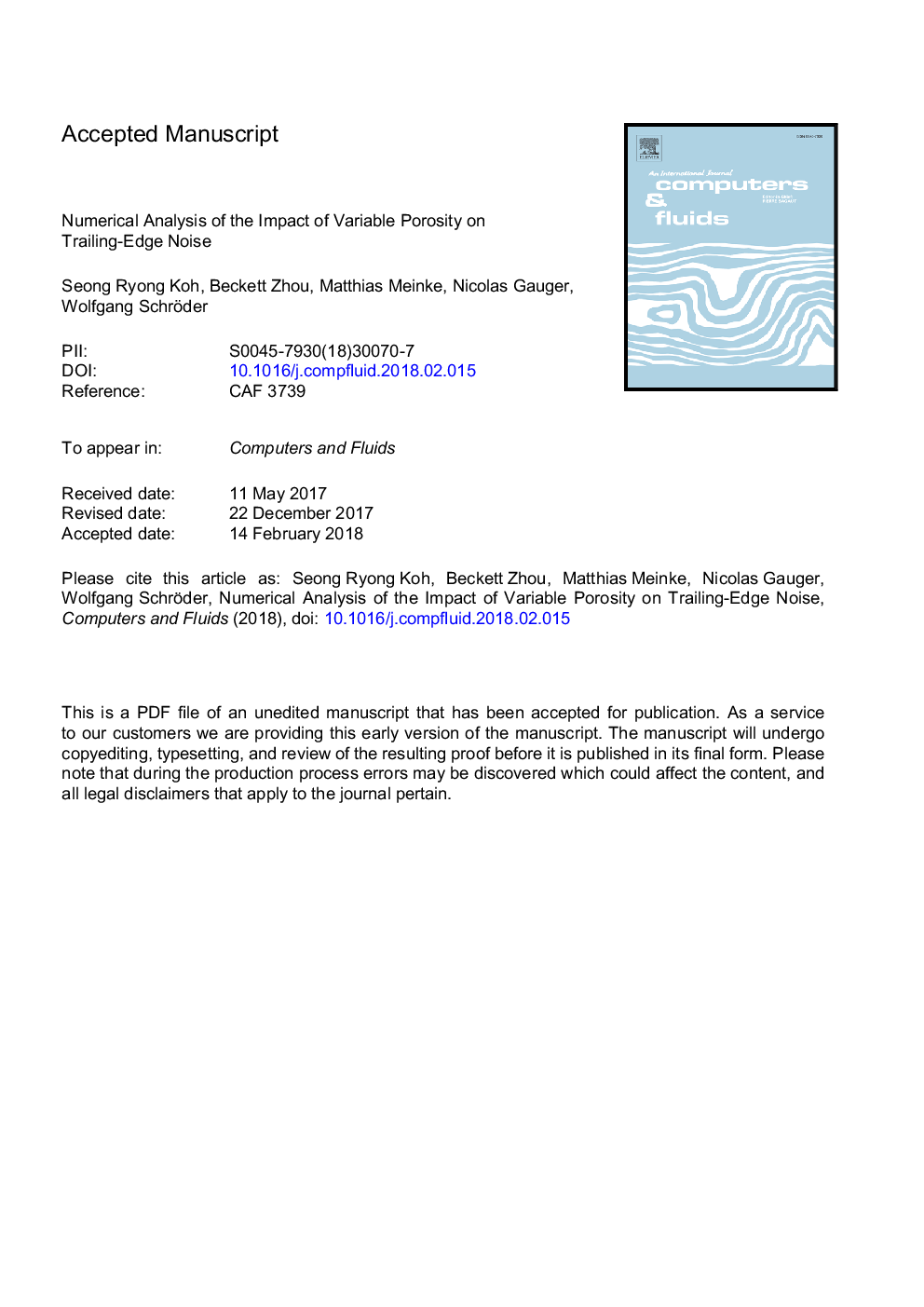| Article ID | Journal | Published Year | Pages | File Type |
|---|---|---|---|---|
| 7156207 | Computers & Fluids | 2018 | 47 Pages |
Abstract
The impact of porous material with variable properties on trailing-edge noise is analyzed by a high resolution large-eddy simulation/computational aeroacoustics (LES/CAA) approach. Two trailing edge shapes, i.e., a sharp edge and a rounded edge, with solid and porous surfaces are considered. The numerical solution of the rounded corner trailing edge is validated by experimental data of surface pressure and acoustic spectra. The viscous dissipation in the porous structures directly influences the acoustic attenuation by reducing the correlation length of the turbulent eddies and the flow acceleration near the trailing edge. At zero angle-of-attack the porous surface is extremely effective to reduce the tone and the broadband noise. An optimized porosity distribution further decreases the tone amplitude. At increasing angle-of-attack the enhanced flow momentum in the direction of streamline curvature enlarges the turbulent length scale and the maximum turbulence intensity. The acoustic field of the porous trailing edges is dominated by a large turbulent scale enhanced by the streamline curvature variation. The low-frequency acoustics increases and its wave propagation is more pronounced in the downstream direction. Nevertheless, the porous trailing edge is an effective means to lower the noise by 4Â dB reduction in the upstream direction.
Related Topics
Physical Sciences and Engineering
Engineering
Computational Mechanics
Authors
Seong Ryong Koh, Beckett Zhou, Matthias Meinke, Nicolas Gauger, Wolfgang Schröder,
